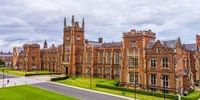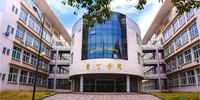The aerospace industry in the UK is the largest in the world, outside of the USA.Ê
Aerodynamics and flight dynamics will remain a key element in the development of future aircraft and in reducing civil transport environmental issues, making significant contributions to the next generation of aircraft configurations.Ê
Why this course?
In the military arena, aerodynamic modelling and flight dynamics play an important role in the design and development of combat aircraft and unmanned air vehicles (UAVs). The continuing search for aerodynamic refinement and performance optimisation for the next generation of aircraft and surface vehicles creates the need for specialist knowledge of fluid flow behaviour.
The MSc in stems from the programme in Aerodynamics which was one of the first masters' courses offered by Cranfield and is an important part of our heritage. The integration of aerodynamics with flight dynamics reflects the long-term link with the aircraft flight test activity established by Cranfield.Ê
Graduates of this course are eligible to join the Cranfield College of Aeronautics Alumni Association (CCAAA), an active community which holds a number of networking and social events throughout the year.
Career
Industry driven research makes our graduates some of the most desirable in the world for recruitment in a wide range of career paths within the aerospace and military sector. A successful graduate should be able to integrate immediately into an industrial or research environment and make an immediate contribution to the group without further training. Increasingly, these skills are in demand in other areas including automotive, environmental, energy and medicine. Recent graduates have found positions in the aerospace, automotive and related sectors.Ê
Employers include:
- Airbus
- BAE Systems
- Onera
- Deutsches Zentrum fŸr Luft- und Raumfahrt (DLR)
- Defence, Science and Technology Laboratory (DSTL)
- QinetiQ
- Rolls-Royce plc
- Snecma
- Thales












